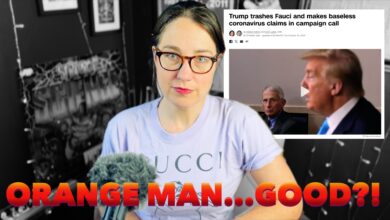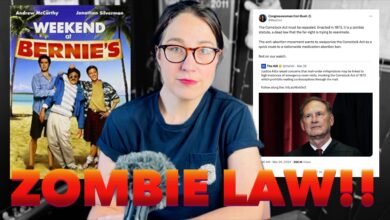6 is the New 10 or No Fatties

Did you know that plus size models are totes no big deal anymore? They’re like…just like other models, you know? Or at least that’s what Elle tells us in a recent interview with Myla Dalbesio. The modeling industry has come so far that now someone who is plus size can get a job and not even expect to be treated differently because of their body. Wowzers! Such progress!
Sounds great, right? The modeling industry is incorporating more body types and they’re not even looking for cookies because they did it! What’s not to like about the story? Elle even highlights that Dalbesia is a size 10, much closer to the national average of size 14 than models who live in the 0-2 range.
The problem shows up when you actually take a look at the pictures of Dalbesio that accompany the article. Now I’m no fashion expert and I don’t spend an excess of time looking at pictures of models, but I am someone who is in the process of recovering from an eating disorder which means that I’ve spent my fair share of time eyeing bodies and determining exactly how much skinnier they are than I am. I can peg a size six from a mile away.
And I can tell you pretty definitively: that woman ain’t no size 10 unless we’re talking a UK 10. This woman is not plus size. She is in fact, significantly smaller than the average woman.
Maybe it’s a step in the right direction. You can’t see any ribs showing, her bones are not the most prominent feature of her body, and her eyes don’t have the sunken look that seems to indicate someone might be starving to death. But if the goal of the campaign is to include women with average bodies, women whose bodies the consumer can relate to, women who represent the kinds of bodies that might be wearing these clothes, then it fails utterly, and Elle fails utterly for slapping a gold star on Calvin Klein for their amazing, progressive actions.
Elle tries to spin the article as highlighting the new status of plus size models as “no big deal” or “just like other models”. “There was a time in the industry, not too long ago, when it seemed that the high fashion world was using plus size models as a headline-grabbing gimmick” they say. Of course they then spend an entire article giving lip service to how amazing it is that Calvin Klein used a plus size model. There’s a special kind of schadenfreude for when someone unintentionally calls their own article out for tokenizing the person they’re interviewing.
I’m not going to give you all some spiel about how skinny models cause eating disorders, because that trivializes what it is to have an eating disorder and the seriously complicated factors that go in to developing one. But what articles like this one do is tell every woman over and over that if they look like this (utterly gorgeous, and still incredibly skinny) woman, they’re plus size and they’ll be lucky to be considered beautiful. The attitude that Dalbesio should be grateful to be treated like a human being when she’s doing her job is seriously damaging to any woman who thinks she needs to look a certain way in order to get respect from their coworkers and bosses.
Let’s just be honest here: this is gaslighting on a societal level. It is gaslighting to try to convince perfectly average and healthy women that their bodies are oversized. Dalbesio is lovely. She is not plus size. Plus size women, and even (gasp) fat women can be lovely. Being lovely doesn’t determine whether or not you deserve a job or respect or clothing made in your size. Maybe we could just start calling models “models”, regardless of size. Maybe we could have a wide enough variety of body sizes in modeling that there wouldn’t have to be special accommodations made to ensure “plus size” clothes are available. Maybe we could have whole ad campaigns with plus size (or as I like to call them perfectly normal) models.
Or we could keep acting as if hiring a plus size model is equivalent to feeding a small third world nation in terms of “good deeds” while simultaneously cutting out every actual plus size woman around. Apparently fat people don’t get to exist in the world of modeling, even when things are supposedly “so much better”.





I mean, shopping for clothing of any size is hard enough as a woman without calling a model who wouldn’t have to go out of the misses section* ‘plus sized’ because she has some body fat between her skin and bones. I want to be able to guess with size I am without having to try on six pairs of pants every time I buy clothing.
* Except possibly because of her height. I can imagine that being tall is one of those not-fun things when shopping.
I was curious and looked at her measurements on her web page, and by some sizing standards (yes, in the US!) she is a 12, with 42″ hips and 32″ waist. At Calvin Klein, she’d be snug in size 12 pants and might have to go up to 14.. and of course the pants probably wouldn’t be long enough for her.
One of my friends recently scoffed at me when I was looking at the plus size section of Forever 21. I told her, I AM plus size. With 44″ hips, I’m a size 16 at most stores. Yet I’ve been eyeballed by shorter women as an 8. I understand the disgust with someone this beautiful and relatively thin being called “plus size,” but maybe we just need to remove the stigma from that word. It’s a stupid term by the fashion industry for those who wear above a 12. My friend thought I was being insulting by calling myself “plus size.” But I am, or at least, I am sometimes, because it’s totally not consistent among clothing manufacturers.
Yeah, this is kind of a problem. It’s true that this model is still very skinny and still not someone the average woman probably relates to and that’s well worth pointing out. The whole argument that this shouldn’t be called “plus sized” is entirely reasonable. But that also doesn’t remotely mean she’s lying when she says she’s a size ten.
It turns out that the whole 6 versus 10 thing is a whole other, but strongly related, discussion. Women’s clothing sizes, I’m sure I don’t really need to tell anyone, are insane. At 5’11” (if the internet is right) I’d be very surprised if this woman could fit into a size 10 off the rack. My wife is not that tall and has always been bigger than a size ten, even when she was probably a good deal to skinny back in college.
What would it take to get the fashion industry to completely revamp their sizing and do away with notions like “plus sized” and single number sizing, and “misses”, “juniors”, “petite”, and “women’s” altogether?
I don’t think I even have to get into how ridiculous all of this is, and how awful the modeling industry standards are, but I do want to add to the height/size proportion discussion here.
I have nearly the exact body of this woman. I’m 5’11” (actually a bit closer to 6′) and my measurements are within an inch or two of hers (smaller boobs and smaller waist on my end — more pear-shaped). I’m a US 10-12 in most pants (UK 12-14), and an 8-10 for shirts and dresses that don’t have a pencil skirt. We could probably swap wardrobes and you wouldn’t notice a fit difference.
Women of short to average height usually guess that I fit a 6 to 8. Nope. Turns out that width scales with height, so the measurements of a tall woman of similar proportion are larger (duh). My mother has a little more weight on her than me, but is of a similar height, and has to shop Plus size sections. I would not consider myself “plus-size” (whatever that means), so the fact that they’re hailing Dalbesio as such seems ridiculous. I know and love many “plus-sized” or just plain fat women. They are lovely and sexy, just the way they are. They deserve clothes that fit in the same styles as smaller sized women.
The last time I fit a size 6, I was 40 lbs underweight and the outpatient of a hospital eating disorder unit. My *bones* would barely squeeze into a size 4 (child-bearing hips ftw). That was also when I got the most solicitations to do modeling tryouts, etc. Of course, I’d never be hired long term as a model even if I’d stayed that size, because sample sizes are usually a 2-4. You have to be built with a very specific frame in order to meet supermodel standards, and the majority of women on the planet are not physically capable of meeting those standards.
Can we please go back to sizing things by bust-waist-hip measurements in inches? No more “vanity” sizing, please. I don’t care about the numbers, I care about being able to know whether something is going to fit or whether its a lie. I have everything from a size 0 to a size 14 in my closet at the moment (and a size 18 or 22 or something if you look at the vintage pieces). That is beyond ridiculous.
Looking at this woman I would assume we have a similar body type. I’m 5’9” and usually wear a size 14 or 16, depending on the kind of store I’m shopping in. The last time I fit in a 12 I was shocked. I haven’t worn a 10 since I was in high school. Vanity sizing makes shopping for clothes for women extremely difficult. Even BMI standards make healthy weight maintenance for women nearly impossible. If I went by what my little fitness app on my phone says, I’d be around 45 pounds thinner than I am now. The last time I was close to that weight, my husband and friends started growing concerned and asking if I was eating enough and if everything was okay. When my husband needs a new pair of pants, he tells me his number measurements and it’s simple for me to shop for them without him. When my birthday rolls around and my mother asks what my size is so she can buy me a cute dress or nice jeans, I simply don’t know. Shopping is always a trial and error experience for me, and for most women I know, that involves grabbing clothes in a range of sizes(for me 12-16) and trying them on to see what fits closest. There is no “Oh, I am a size 14.” I just want some numbers that make sense. Right now, I have size small through x-large t-shirts hanging and old maternity pants that are sized ten as well as jeans and pants anywhere between size 12-16. And they ALL fit me. How does that make any sense? It’s time for a change, both for women’s benefit and because the system now just doesn’t make any freakin’ sense.